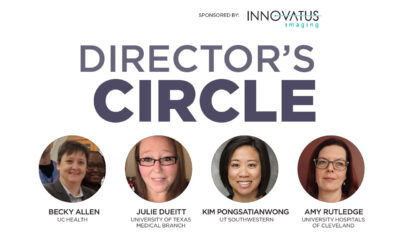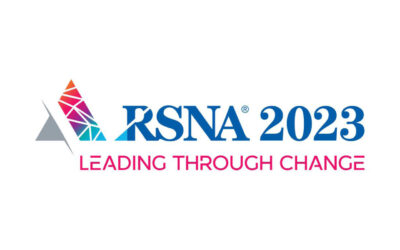 By Keith Chew
By Keith Chew
The National Center for Biotechnology recently updated the informational page on medical error and reduction, and the extent of the challenge faced by the health care industry is daunting. Did you know medical errors result in 100,000 people dying each year and cost upward of $20 billion dollars a year? Missed diagnoses play a big role in these numbers. According to The Joint Commission, diagnostic errors lead to injury or death for 40,000 to 80,000 patients a year.
As we continue our series on cross industry learnings, we look to the skies. Airline companies have long been compared to hospital systems, as they both seek to reduce fatal errors. While the issue and impact of controlling medical errors differs from controlling flight accidents, both industries face similar challenges.
Despite the number of worldwide flight hours doubling over the past 19 years (from approximately 35 million in 1999 to 71 million in 2018), the fatality rates have significantly decreased. To understand how the airlines achieved these reductions, let’s look at the various ways airline companies have embodied a culture of safety for their more than 4.5 billion annual passengers.
Start with a Checklist
Checklists were first developed for flight crews in the 1980s with the goal of decreasing aircraft accidents. As a part of “crew resource management,” checklists were employed to limit avoidable mistakes that are made because pilots and crews – at times – systematically deviated from normal behaviors. Since then, global health care organizations have adopted checklists as described in Atul Gawande’s bestselling book, “The Checklist Manifesto.”
Adopting a Blame-Free Culture
The aviation industry has gone beyond the checklist and sought to get a comprehensive understanding of and mitigation approach to safety. The Federal Aviation Administration (FAA) created the Aviation Safety Reporting System, a valuable tool that allows pilots and other flight crew to report errors and accidents confidentially without fear of reprisal. This highly endorsed tool gathered almost 100,000 reports in 2018 alone. Furthermore, there are similar programs for air traffic control, technical operations and flight operations.
Simply put, aviation has a blame-free culture, (a just-culture) focused more on identifying and solving the problem and less on penalizing or suing people. This allows for a clearer picture of the safety challenges aviation professionals face.
What if we told you that a similar idea exists in the health care industry?
The Patient Safety and Quality Improvement Act of 2005 authorized the Agency for Healthcare Research and Quality (AHRQ) to create the Patient Safety Organization (PSO) program. These organizations are experts at identifying the causes of threats to quality and safety and then developing interventions to prevent and mediate these issues. Most importantly, there are significant legal protections for providers to disclose patient safety events and learn from them. While providers were once reluctant to discuss patient safety events for fear of legal exposure, they can seek analysis from PSOs and discuss these events with peers from other institutions that are part of the PSO. Another tool is the Network of Patient Safety Databases (NPSD), similar to the Aviation Safety Reporting System, the focus is to enable learning on a national scale. Here, de-identified patient safety events are reviewed in terms of cause, outcome and prevention of future incidents. Sadly, hospitals haven’t fully embraced the PSO program because of a lack of general awareness and/or understanding of the value.
Most hospitals that work with PSOs see improved patient safety. For example, one hospital’s PSO alerted it to a malfunction with a certain medical device. This hospital and its peer institutions were able to identify the device and resolve the malfunction. PSOs provide hospitals analysis and education of patient safety in several ways:
- Root-cause analyses
- Benchmarking
- Safe Tables, a program where member hospital representatives confidentially meet and share best practices
One hospital representative said, “Learning from other organizations in a safe environment has been extremely helpful. It assists us with identifying risks we may not have considered and decreases the chance of harm occurring to our patients.”
Capturing ROI from Prioritizing Patient Safety
As health care works to transition from fee-for-service to value-based care, patient safety is not only the ethically correct thing to do but also the financially responsible approach to adopt. Reimbursement will increasingly be tied to a health system’s patient safety and quality metrics with programs such as Medicare Access and CHIP Reauthorization Act of 2015 (MACRA). Health systems that are not addressing adverse events and readmission rates will see a loss in reimbursements. Private health insurers are focusing more on this topic with quality reporting initiatives, such as Healthcare Effectiveness Data and Information Set (HEDIS).
How do we apply learnings from the aviation industry to health care? This example from a U.S.-based academic medical center provides a road map, complete with ROI, for implementing a Crew Resource Management Program (CRMP). As a result of the program, Ohio State University Wexner Medical Center shifted its culture and significantly reduced adverse events, finding:
The total number of adverse events avoided was 735, a 25.7% reduction
Savings ranged from a conservative estimate of $12.6 million to as much as $28.0 million
CRMP presents a financially viable way to systematically organize for quality improvement. Thank you, airline industry!
Health systems can leverage these cross-industry learnings by asking a few questions:
- Are patient safety and quality improvement the first thing that comes to mind when you think about your hospital?
- Is there a culture of blame and risk mitigation rather than group/peer learning and smart error detection?
- Has your hospital explored how patient safety and quality improvement can increase reimbursement and strengthen your balance sheet?
Join us next month as we tap into the energy industry to learn from experience in managing errors. •
Keith E. Chew, MHA, CMPE, FRBMA, is a principal with Consulting with Integrity.








